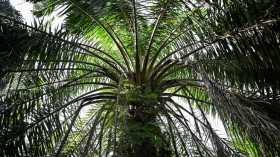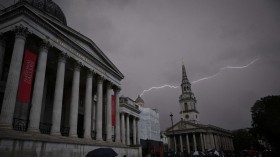A 10-minute telescope workshop for University College London undergraduate students resulted in the serendipitous discovery of one of the closest supernova in years.
"One minute we're eating pizza then five minutes later we've helped to discover a supernova," student Tom Wright said in a statement. "I couldn't believe it. It reminds me why I got interested in astronomy in the first place."
The eruption was spotted roughly 12 million light years away in the galaxy Messier 82.
Steve Fossey, an astronomy teaching fellow, led the students who focused in on the nearby galaxy based on its visibility at the time.
"The weather was closing in, with increasing cloud," Fossey said. As the clouds continued to expand across the sky, Fossey jettisoned the class he had planned for that day and instead opted for a demonstration of one of the observatory's cameras. He was adjusting the telescope's position when he spotted what appeared to be an out-of-place star.
A look at archived images confirmed the object was indeed new, at which point the class became a race to document the apparition before it was lost behind the clouds.
With virtually no time to spare, Fossey and his group were able to obtain a second look at the supernova using a different telescope, proving it was not a defect of the first.
"It was a surreal and exciting experience taking images of the unidentified object as Steve ran around the observatory verifying the result," Guy Pollack, another student involved in the discovery, said.
Fossey quickly put a report together for the International Astronomical Union's Central Bureau for Astronomical Telegrams, which catalogues supernovae, in addition to alerting a US-based supernova search team.
Data collected by researchers at other observatories suggest the object is a Type Ia supernova, which are formed when a white dwarf star steals material from a larger nearby star until eventually it becomes unstable and erupts.
"To be honest it was just a really odd experience," student Matt Wilde said. "We were expecting a standard quick look through the telescope and a chance to use the camera for the first time before the clouds moved in, that's all. When we started looking and Steve began getting a bit more excited none of us could really believe what was going on. I can't wait to get back on a telescope next week now."
© 2024 NatureWorldNews.com All rights reserved. Do not reproduce without permission.





